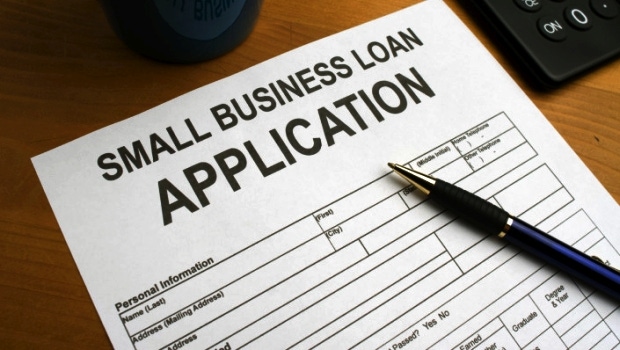Small Business Administration Loan Programs: A Guide for Self-Storage Borrowers
It’s been six years since the Small Business Administration opened its 7(a) and 504 lending programs to self-storage borrowers. This article outlines loan benefits and details as well as borrower requirements.
July 16, 2016

By Terry Campbell
The backbone of this country has always been small businesses; if they suffer, so does the economy. Access to capital has often been difficult for these enterprises, and following the economic crisis of 2008, it was nearly impossible.
The Small Business Administration (SBA) was established in 1953, but it took 57 years for self-storage borrowers to become eligible for its lending program. In 2010, the SBA announced it would grant banks the ability to provide its loans to our industry. At the time, many facility owners didn’t have the funds to build or buy existing properties. This announcement allowed those with strong cash flow, positive feasibility studies and business experience to qualify for loans that are partially guaranteed by the government.
Let’s take a closer look at how SBA loans work and how you can qualify for this unique lending opportunity.
Advantages to SBA Loans
For most borrowers, banks typically come to mind as a traditional source of credit. However, there are advantages to using an SBA program. For example:
SBA 7(a) loans have a 25-year fully amortizing term, high-leverage down payments, and no balloons or financial covenants such as loan-to-value and debt-service coverage ratios.
Most conventional bank loans typically require a down payment of approximately 25 percent. Sometimes it’s less or more depending on the bank, the project and the borrower relationship. SBA loans are based on a cash-flow analysis of the potential project or existing facility. Interest-only payments during construction and lease-up can also be included.
The 7(a) loan program has a short, three-year prepayment penalty.
Because of these benefits, small-business owners who lack the full amount needed for a conventional bank loan may be able to use the 7(a).
Conventional commercial loans have never been easy for small businesses to obtain, and since the financial crisis, banks have further tightened their lending standards. When applying for a loan with a traditional bank, expect to supply several years of financial statements and show a history of consistent growth. In contrast, if a loan meets the $5 million limit for the 7(a) program, some banks can make this loan with a companion conventional and still take advantage of the 7(a)’s benefits. If not, an SBA 504 loan can be used.
A 504 loan, also known as a Certified Development Company (CDC) loan, allows owners and investors to obtain additional financing. A CDC is a nonprofit organization established to enhance the economic development of a community. A 504 loan consists of a relationship between the CDC, lender and SBA. With a 504 project, the borrower is generally eligible for long-term financing—20-year, full-term, fixed-rate on the CDC-provided portion of the loan.
Ultimately, the 7(a) program allows a borrower a better opportunity to be the sole owner of his business. Aside from his relationship with the lender, he may not need additional partners, which is why this program is a viable option for those looking to get into the self-storage industry. SBA 7(a) loans help the business owner stay independent without having to engage equity partners. This isn’t as likely with a conventional loan.
Qualifying for an SBA Loan
There are five definitive traits lenders seek in borrowers who apply for SBA financing. Often referred to as the five Cs, these will vastly affect your ability to secure a loan:
Credit is a direct reflection of your financial patterns. Most lenders prefer to see a credit score of 700 or higher as well as a detailed track record of your spending habits. Criteria may differ by bank, including what is considered an acceptable credit score.
Collateral is measured by the number of assets you have to secure the loan and your saleability in the event of liquidation. A benefit of 7(a) loans is they’re not collateral-driven; however, the loan must be fully collateralized if possible.
Your character is evaluated through your historical working accomplishments and plan for the overall success of the business. It’s important to have a thorough business plan in place.
Cash flow is the most significant factor for an SBA loan. The bank will perform a cash-flow analysis to determine whether the business can be profitable while also supporting its expenses and new loan debt.
Commitment is how involved you are with the project. It’s frequently determined by your willingness to “have some skin in the game” as well as your employment history.
Having your personal and business financials in order will dramatically increase your chances of receiving financing and aid your ability to acquire, build or renovate your self-storage project.
Finding a Lender
Like other types of loans, SBA lending isn’t without rules and regulations. The key to a smooth process is to find a lender that understands both SBA lending and the storage industry. Many banks have an SBA division, but few specialize in these loans or have a dedicated team assigned to them, much less a group of experts who focus solely on self-storage.
Also, many banks are apprehensive of the time it can take a new storage facility to break even, as well as 30-day leases and other factors associated with the industry. This ultimately deters them from making SBA loans, or even conventional loans for that matter. If you’re considering an SBA program, look for a qualified lender that has experience financing to self-storage borrowers. There are many options available for owners. Consider the 7(a) loan program one of your promising choices.
Terry Campbell is general manager for the self-storage lending division of Live Oak Bank, which offers financing for facility acquisitions, construction, expansion, refinancing or renovation. He has more than 20 years of self-storage industry experience. For more information, call 877.890.5867; e-mail [email protected]; visit www.liveoakbank.com.
You May Also Like





